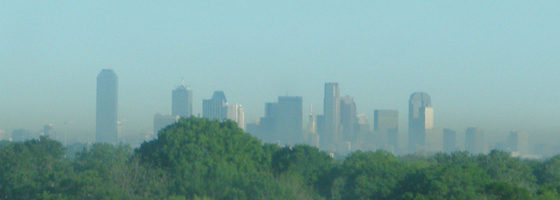Q&A: EPA explains My Air, My Health Sensor Challenge

The U.S. Environmental Protection Agency and the U.S. Department of Health and Human Services challenged the public to create a new sensor integrating air quality information with human health conditions.
More than 500 people listened in to the proposition at a webinar last June. The sensor had to be wearable and measure air quality and health conditions simultaneously. It also had to be simple and use existing technology to create a new easily reproducible concept.
Four finalists were chosen to move from a paper proposal to concept creation. They were awarded $15,000 to move forward. The winner will receive $100,000 prize.
Environmental Monitor reporter Austen Verrilli sent questions to the EPA to obtain more information on the competition proceedings.
EM: What sparked this challenge and the collaboration between the EPA and the National Institutes of Health?
EPA: This challenge, which involves EPA and the U.S. Department of Health and Human Services (HHS), including the National Institutes of Health, was sparked by the desire to improve public health while using resources effectively. The ‘My Air, My Health’ challenge provides EPA and HHS the opportunity to advance science and technology in areas of concern to both agencies, specifically to learn more about the important linkages between air pollution and human health.
EM: How many teams applied with plans?
EPA: Thirty-two teams submitted plans as part of the competition. More than 500 people registered for a webinar to learn about the project when it was announced.
EM: I saw that teams/individuals only needed to submit a written plan. What did the evaluation process look like for these plans? Was there any common thread in the format of winning plans?
EPA: The ‘My Air, My Health’ submissions were evaluated by a panel of expert external reviewers who provided comments on the submissions. EPA and HHS made the selection of Phase I finalists. As far as common threads, all the finalists were responsive to the challenge: They produced plans for portable solutions that couple air and health sensors.
EM: What plans barely missed the cut?
EPA: The Challenge called for four finalists, but EPA and HHS identified two submissions that had outstanding components in their proposals. Rajiv Totlani of Frisco, Texas, and Peter Sotory of Raleigh, N.C. received ‘Honorable Mention.’
EM: Another subject brought up in the webinar was the potential assistance of outside organizations once plans were approved. Have any organizations stepped up with technical help or funding? Will there be any process to level the playing field for those who do not get outside help?
EPA: To date, no organizations have stepped up that we are aware of. The projects might be communicating with outside organizations without our knowledge. We will provide a specific opportunity at a workshop on December 6, 2012 in Research Triangle Park, N.C. The four finalists and two honorable mentions are also invited. The workshop is a small event designed to facilitate interaction between the four challenge finalists and experts in areas including funding, legal compliance, community engagement, and start-up development. Those in attendance will benefit from the insights and networking opportunities to be gained from the mix of individuals representing the public, private, and academic sectors.
EM: Has a day been chosen to announce the winner yet?
EPA: We anticipate the announcement will come in June 2013.
EM: How realistic is the application of new air-health sensor technology to a large population?
EPA: That’s really the purpose of this challenge, to push this technology to be more widespread. We want to promote the science and technology behind these sensors. Air and health sensor technologies are already happening at a citizen-science level. There are DIY kits available, so people can build and install their own air quality monitor in their backyards. Health monitoring technologies are also decreasing in cost and size. The integration of air monitors with sensors that are affordable and accurate is the challenge.
Finalists according to a news release are below:
- Guy Shechter, Mark Aloia, Johan Marra, Arpana Sali, Ronald Wolf of Phillips Healthcare proposed a particle sensing devices that also measure respiratory function and vital signs.
- Michael Taylor, of Carnegie Melon University, and Carlos Restrepo and George D. Thurston, of New York University, proposed a Mobile application and website to link exposures to carbon monoxide and fine particulate matter with heart rates and blood oxygen levels.
- Gabrielle Dockterman, of Carlisle Mass., David Kuller of Milan, Italy and Dot Kelly of Darien, Conn. proposed athletic clothing that measures airborne pollutants and relevant health metrics.
- Aaron Hechmer, of El Cerrito Calif., proposed Integrated modular air quality sensors, breathing games, and a software package that promote public sharing of health information.
Image: Smog over Dallas (Credit: Turn685, via Wikimedia Commons)




0 comments